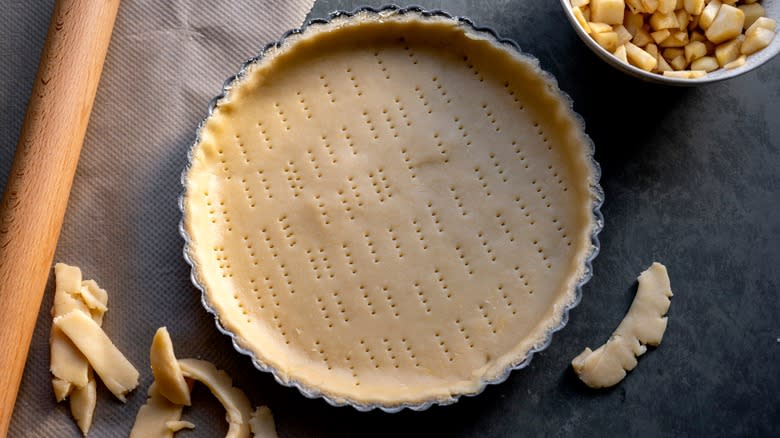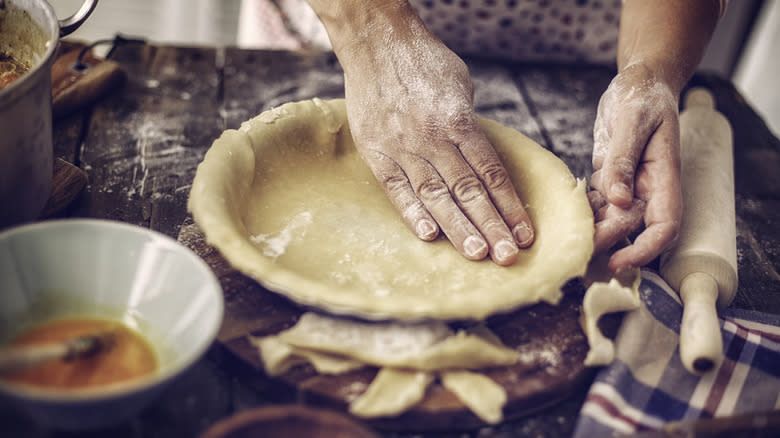For The Richest, Flakiest Pie Crust Use Cold Duck Fat

When it comes to pie, it's hard to beat the homemade variety. The best version of a homemade pie is one where the crust is also homemade (even though there are ways to elevate a store-bought pie crust). Making a pie crust from scratch is no easy feat — but there are ways to make sure that you get a rich, flaky crust. One unexpected method? Use cold duck fat.
You're probably asking, "Duck fat in a pie?" But bear with us: Using fat in a pie crust is key. For most pie crusts, you'll need three parts flour, two parts fat, and one part water. For the fat portion of the crust, many recipes call for butter, of course, but sometimes butter is replaced by another fat or perhaps combined with shortening. However, duck fat may just be the best option for your pie crust (either on its own or in combination with butter), as shortening requires a higher temperature to melt. If you don't have access to duck fat, other animal fats will work as well, such as pork lard or beef tallow.
Read more: 30 Types Of Cake, Explained
Other Tips To Make The Perfect Pie Crust

Whatever you end up working with, you need to make sure you keep the ingredients cold. This will ensure that the fats won't start melting before making it into the oven. If the fats start melting prematurely, then the crust won't end up as flaky as you want it. Make sure that duck fat — or other fat — comes right out of the fridge and that the water you use is ice cold.
Additionally, many recipes — such as Tasting Table's recipe for a flaky pie crust — call for vodka to moisten the dough and limit gluten development. Make sure the vodka is also ice cold before adding it to the mixture. You'll also want to pay attention to the flour you use. To achieve the flakiest pie crust, you actually want to use a mix of all-purpose flour and pastry flour. This is because pastry flour has the perfect protein content (between 8% and 10%) to yield a tender crust, while all-purpose flour's higher protein content (between 10% and 12%) allows for the dough to be sturdy enough to work with.
Read the original article on Tasting Table.